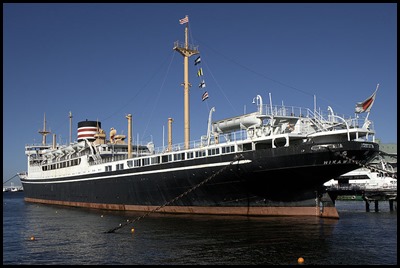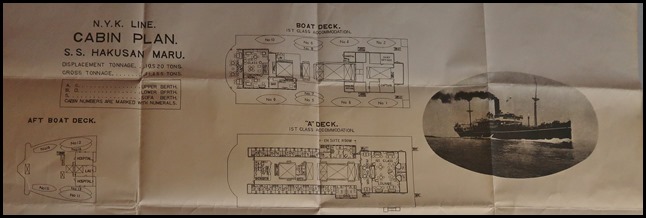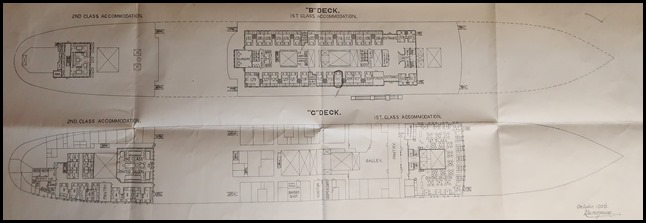Nippon Yusen Pt 2

|
Former Nippon Yusen Offices,
Otaru – Part Two
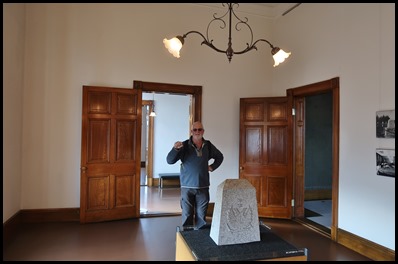 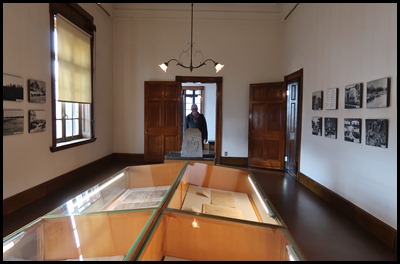 The room beyond
the meeting room had ‘interesting stuff’ but nothing in English. Bear
can’t remember what he was gesticulating about in the first picture – too long ago, thank you for that but I don’t do blogs
immediately (often for months....usually seventy four behind on
average.....).
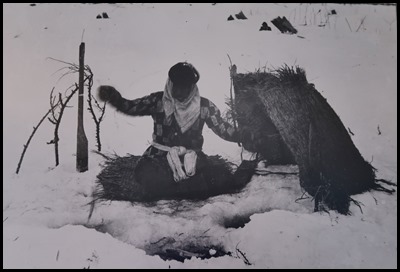 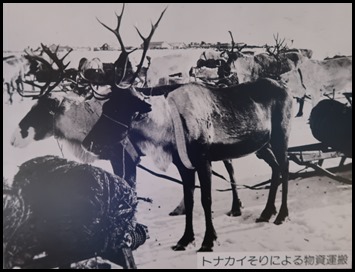 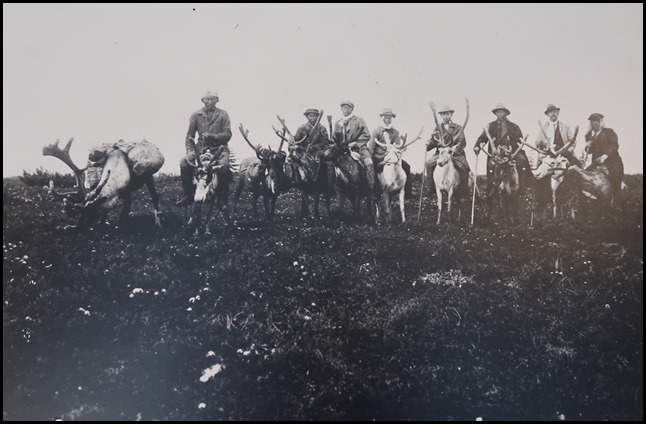  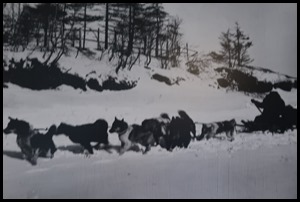 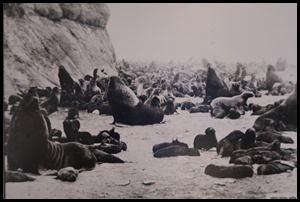 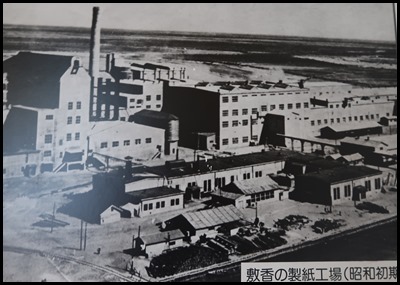 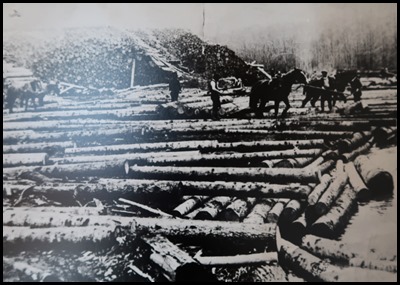 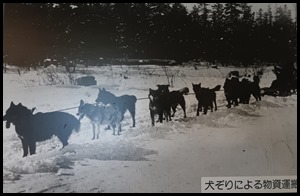 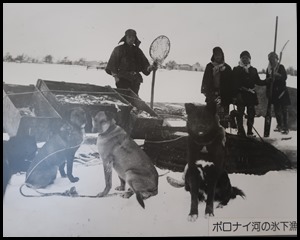 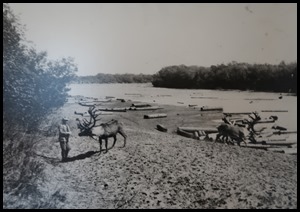 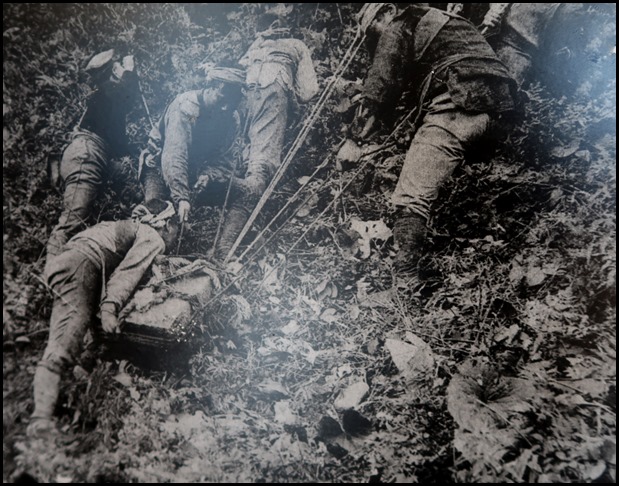 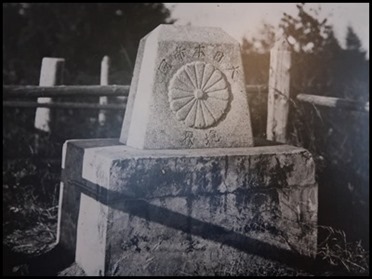 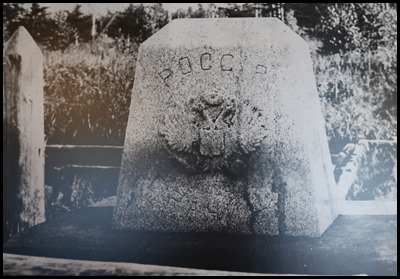 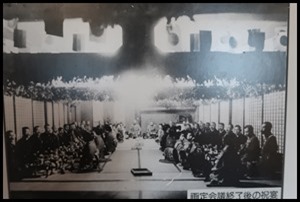 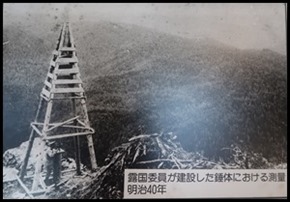 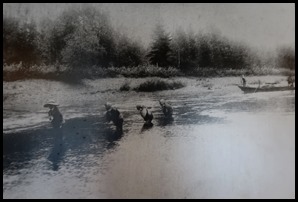 The wonderfully eclectic photograph collection on the walls.
 Clearly, the stone
monument was something quite precious.
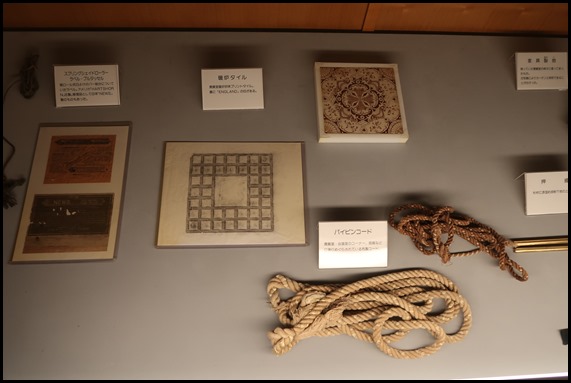 There were another two rooms filled
with people, probably very important to the company but with no English they
became not so important to us. We headed into the last room (opposite the party
room) and found all the architectural plans for the building and some stuff in a cabinet.
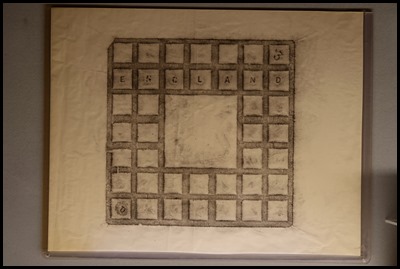 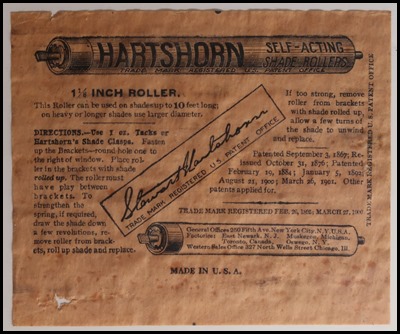 In the cabinet was a tile from England and the instructions for the American roller blind. Patented in 1867.
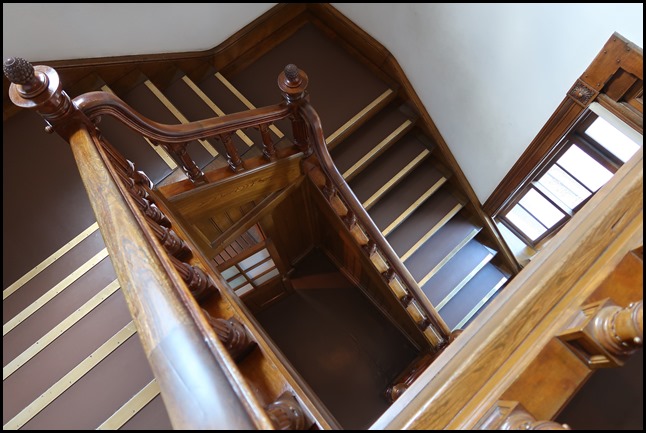 My slippers were getting on my nerves
and I had the stairs to face without breaking my
neck.
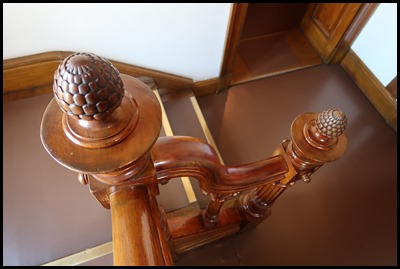 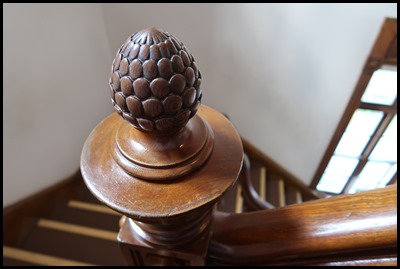 Adorable pineapple
finish that we know from the Caribbean meaning wealth and
welcome.
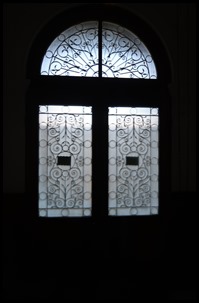 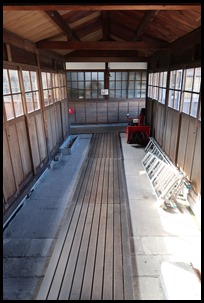 After ten minutes or so we made down
the stairs without incident. Passing the main front
door we went through a side door to find a more traditional Japanese corridor.
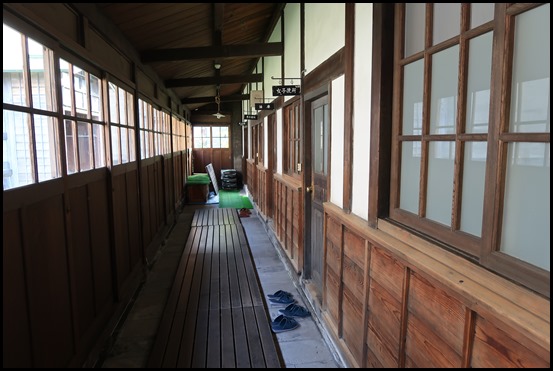 At the end of the corridor was a long line of company offices, we headed back
inside.
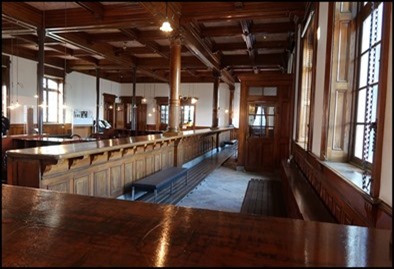 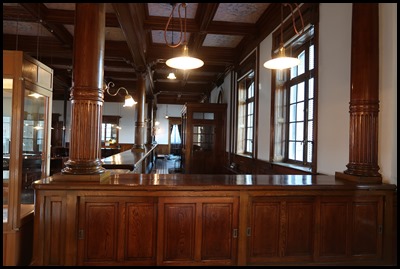 We walked through the main room,
the counter used until 1954 when the then NYK
Line left the building. Such an English feel, we could be in so many
libraries or offices.
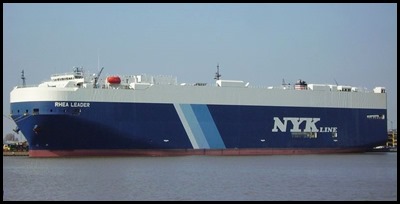 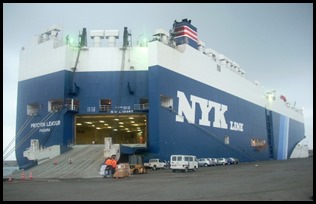 Rhea
Leader and Procyon Leader, two
of my favourite chums.
Nippon Yusen Kabushiki Kaisha (NYK) is
the largest marine transporter in Japan. The company has 615 vessels in its
arsenal and provides liner service, tramps, specialised carriers, and tankers.
Through nearly 500 subsidiaries, NYK also offers services related to terminal
and harbour transport, cruise lines and travel, logistics services, tugboat
operations, and air transport. Shipping accounts for just over 60% of company
revenues while logistics brings in 20%. NYK's terminal and harbour transport,
shipping-related services, cruise, and real estate operations are responsible
for the remaining portion of revenues.
The history of NYK's business
operations can be divided into four periods. The first marks the company's
establishment in 1885 and consolidation over the next decade. In the second,
from the mid-1890’s to around 1908, the company carried out an initial and rapid
expansion of overseas lines. In the third, after the Russo-Japanese War of 1904
to 1905, NYK began to concentrate more exclusively on regular lines within
conferences.
The most famous strategic response of NYK during these years was its substantial investment in passenger services. In 1926 it purchased the Pacific operations of the Toyo Kisen Kaisha, which ran mostly to San Francisco, and proceeded to build a series of world-class passenger ships. Decades later, long after NYK had withdrawn from the passenger business, the company's popular identity was still associated with these vessels. Despite their popularity, the passenger business did represent a specialized version of the already cautious liner strategy and NYK fell behind OSK in introducing express ships on the New York line in the late 1920’s. These ships were fast enough to effect a change in the silk trade, from the rail route via northern Pacific ports to the Panama route. NYK was slow to enter the tramp business also, remaining instead primarily within the conference systems. This presented two additional problems linked to the United States. One was U.S. antitrust law, which forbids exclusionary practices of cartels like the Far Eastern Freight Conference. The second was economic, and emerged through the restructuring of many shipping routes in response to changing demand from U.S. trade and industry. With its cautious strategy NYK had difficulty responding to these changes, and by the eve of World War II it was being seriously challenged by OSK for pre-eminence among Japanese shipping firms. NYK earned huge profits during World War I, with government controls over freight rates on subsidized lines, the company exploited the war less effectively than many independent Japanese operators, who carried on tramp services outside of government restrictions. The war and its aftermath opened up new lines for the company, to New York via Panama, to Liverpool, and to Hamburg. The central problem of the interwar years was how to operate this more geographically extensive network with steady growth in the face of increased competition from Japanese firms and the emergence of a much larger U.S. fleet.
This was a conservative strategy that lasted until the late 1950s, when the company started a comprehensive series of services, a move which led to the fourth period, one of diversification and expansion, that continued into the new millennium. (During World War II NYK lost virtually all of its large oceangoing vessels, and its fleet fell from a peak of 866,000 gross tons in 1941 to 155,000 at the end of the war).
In World War II the NYK Line provided military transport and hospital ships for the Imperial Japanese Army and Navy. Many vessels were sunk by the Allied navies, and installations and ports were attacked from the air. Only 37 NYK ships survived the war. The company lost 185 ships in support of military operations in the Pacific. Before the war NYK had 36 passenger ships; by the time of Japan's surrender only one, the motor ship Hikawa Maru, survived (then and now).
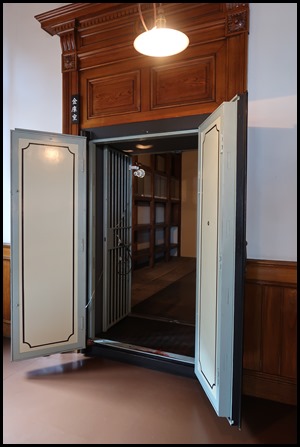 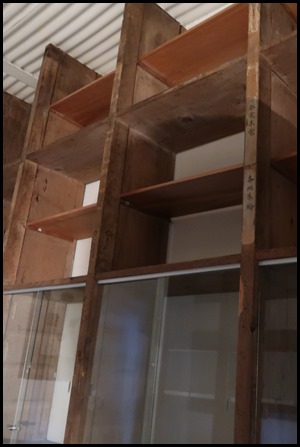 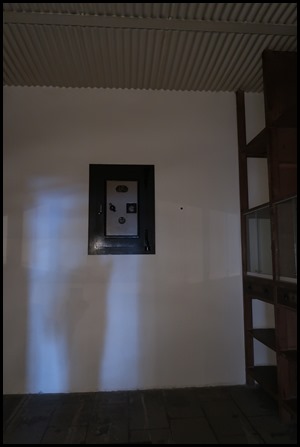 We ventured in to the vault, shelves each side and the important little safe at the end.
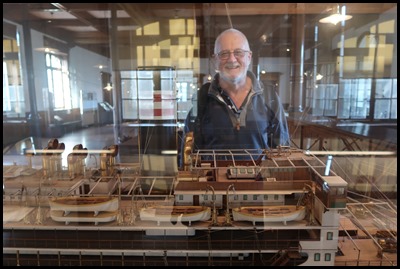 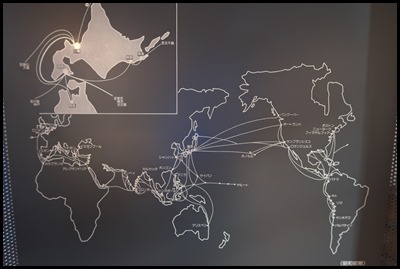 A model of one of
the lines cruise ships and the routes
taken.
 NYK head
office today in Tokyo.
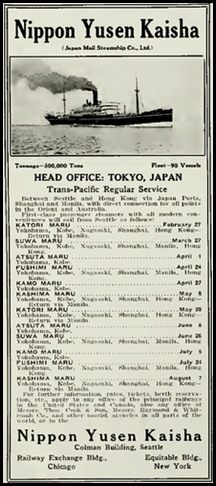 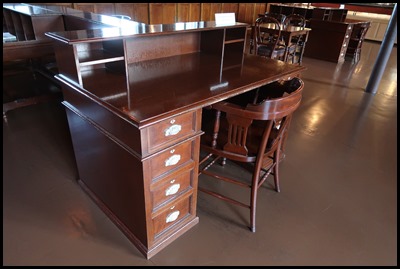 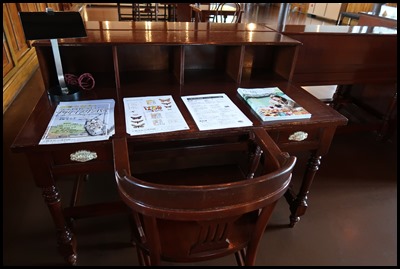 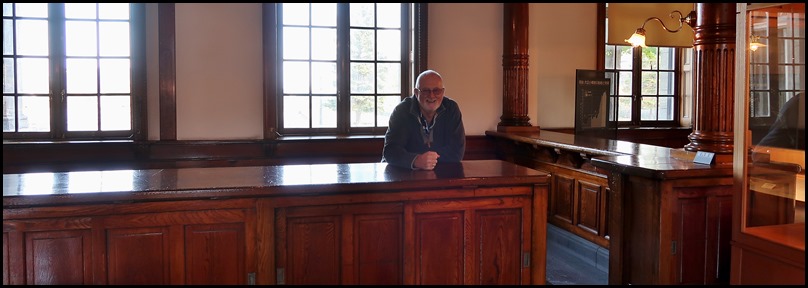 How wonderful to have seen one of the
original buildings and nick knacks of the
company.
ALL IN ALL CHUFFED TO
BITS
AN INTERESTING OLD
BUILDING |

